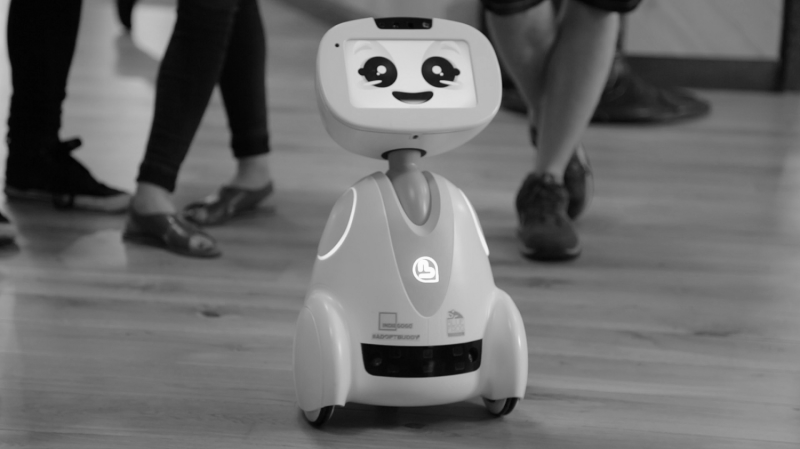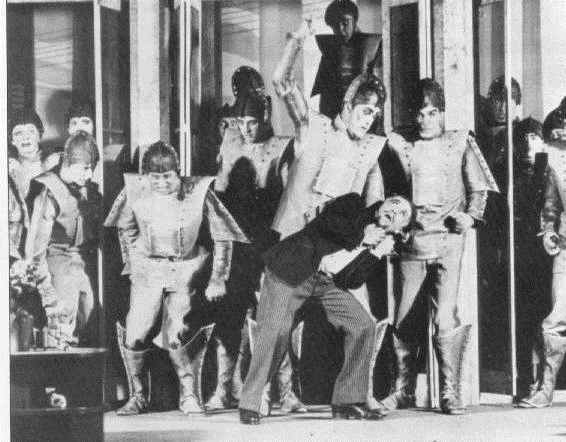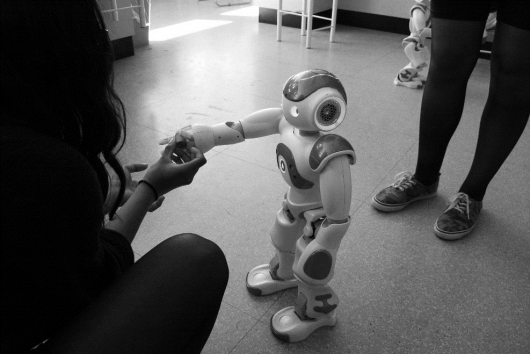Sense-making processes of human-robot encounters

Today, most of us have integrated all sorts of digital devices as part of our lives so far that it is hard to imagine life without smartphones, tablets and computers. All aspect of our lives have been transformed by their use, from entertainment, through work and socializing, even to love. As media they significantly shape our reality, but when it comes to social relationships they remain just that – tools that help us connect to others.
But could we imagine a future in which we do not use digital tools but rather interact with them as with independent beings? Where we do not use the computer to socialize with friends, but socialize with the computer? In such future interfaces would become faces. This future is already becoming a reality and it is best seen in recent developments in social robotics. While social media help mediate already existing relationships, robots may soon become beings with whom we will develop completely new kinds of relationships, eventually changing the landscape of social reality.
From myths to tangible robots
Ideas and myths about building human-like creatures date back to old Jewish myth about the Golem – an anthropomorphic clay being that could be brought to life by placing a parchment with a spell in its mouth. In the early modern period advancements in mechanics allowed for construction of automatons in the shape of both humans and animals. Not only did the science-fictional play R.U.R. (Rossum's Universal Robots) from 1920 by Czech writer Karel Čapek revolve around the fabrication of artificial people and how they eventually rebelled against their creators but also introduced the word 'robot', which is now commonly used to denote autonomous machines.
It was, however, first in the late 1950's that we have acquired the scientific knowledge and technical skills that allowed for development of robots as we normally see them portrayed in various pop-cultural narratives such as Star Wars. As technology became available it was quickly integrated into society mostly in research and industry. Today robots are commonly found in factories where they are used on production lines to replace manual workers. Robots have also been used to carry out tasks that are deemed too dangerous for humans like dismantling of bombs used in warfare. In research labs scientists are using robots as a testbed for scientific theories. These robots remain, however, far from our everyday lives and are mainly treated and experienced as mere instruments for a human and societal end.
A different trend appeared in the late 1990s, when robot toys for children, such as the robot dog AIBO and the robot bird FURBY, were first developed. They were made to entertain children and provide alternatives to real, living pets. Quickly moving beyond entertainment context, robots started to be viewed as the new technological solution to problems western countries had to face in relation to demographic changes. Robotics engineers begun developing robots that were capable of carrying out not merely physical work but could also perform social functions. Several countries, such as Japan, Germany, the US, Denmark and the Netherlands, have already introduced into elder care the robotic seal-pup PARO whose purpose is to engage nursing home residents in interactions that contribute to their mental health and keep them company.
These kind of robots are now also developed and tested in other social practices such as education and therapy. In all these instances the main idea remains the same: these robots are no longer seen as mere instruments, but rather as crucial interaction partners for those people in our society who might be in need of some special help or care. But the ultimate goal in social robotics is a possibility of building more advanced robots that could eventually become true companions, and not only in the context of therapy or elder care.
In line with this aspiration the most recent developments in social robotics aim for developing robot companions for families. No longer seen as merely playthings for children or companions for the lonely, these robots are marketed as universal assistance that can help all members of the family and carry out various daily chores around the house. Robot like JIBO, BUDDY and ZENBO, developed with the idea of becoming an integral part of everyday life, mark an important shift from thinking about robots as something exceptional and futuristic to something ordinary: just another member of family giving a helping hand in carrying out the tasks in our day-to-day life.

Dealing with ambiguity
Robots and digital technologies have always been of interest to social sciences. Automatization have transformed the whole world of work. Social media have changed the way we engage with both friends and strangers. Today social robotics are poised to challenge the very idea of what role technological objects play in our social reality. However, unlike computers and other digital tools social robots have not yet gone into general public as common element of life, and so it is hard to give any concrete ideas on future developments. Still, speculations are possible.
Science-fiction narratives have long speculated on how reality with all-present robots would look. Consistently they presented such future as a dystopian nightmare, perhaps exploiting our fear of the unknown for dramatic effect and box-office success. A more cautious, more realistic prediction is that we will co-develop with robots. Humans will become more sensitive to how we can engage with technological interface (or face) and in turn robots will adapt to human needs. It is therefore not a questions of whether humans or robots will be the master of the future but rather how humans and robots together will create and cultivate new forms of social realities.
This means that a digital future might open up a possibility for development of new kinds of social relations we have never seen before. If that happens it will be less an occasion for panic than for deep wonder: the generation of today and the future will most probably live in a time when development of social relations are no longer defined and reserved for humans but always in co-construction with those very technologies people use on a daily basis. We do not know how we came to develop partnership relations with animals like dogs and cats but now it is a well-established and highly valued part of reality and similarly the near future might let us see the arising of new partnerships with robots. This does not mean that robots will replace current relationships with people, that instead of human friends and lovers we will have robotic ones. Rather the possibility is of developing separate, new kinds of relationships with robots that will exist alongside already present human-human and human-animal relationships.

How would such relationships look? Judging by our current interactions with robots, they will probably involve certain ambiguity, in that we will constantly shift in our experience of robots as both tools and social beings. The way we will understand and come to terms with this ambiguity is precisely the question and the task at hand when reflecting on how people live in a digital future.
Provided by University of Vienna


















